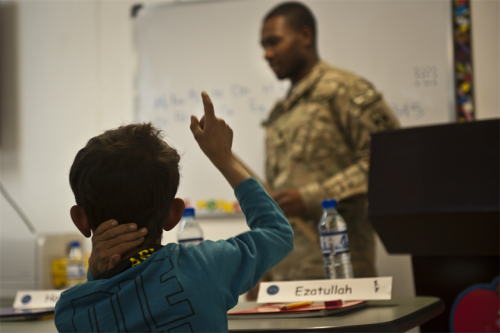
An inclusive educational setup poses numerous advantages that will hone the students not just academically, but also as human beings. By being an inclusive classroom, the said teaching space houses various types of students—regardless of their differences or similarities. Together, this diversity of students interact with each other and are educated together.
Lilla Dale McManis, PhD defines inclusive classroom as, “The school and classroom operate on the premise that students with disabilities are as fundamentally competent as students without disabilities. Therefore, all students can be full participants in their classrooms and in the local school community.”
By opening the doors to diverse kinds of students, an inclusive classroom acknowledges the differences among these learners. Together with the educators, an inclusive education system develops a structure wherein students from general education programs and special education programs are placed together in a similar learning environment.
With the goal of enriching these students, different strategies and tactics are employed to ensure that all the needs of the students are met and that they are imparted and skilled with sufficient knowledge to nurture them and help them grow holistically as responsible members of the society.
The advantages presented by an inclusive educational system reach beyond academics. The following are some of the best benefits beyond the four walls of an inclusive classroom:
- Understanding And Valuing Diversity
By being inclusive, the class is welcome to house different kinds of students—physically, mentally, culturally, and others—said learners can witness firsthand the varied diversity that exists.
By experiencing and having had direct contact with such diversity, students can understand the real differences between individuals, and in time, they will learn how to value and appreciate such diversity.
Melissa Gomez, EdD shares that, “In my class I ask students to investigate, question, and reflect on their own biases from a place of nonjudgment. Therefore, I must be willing to do the same and share the results of
my personal inquiries.”
- Acceptance Of Differences

The exposure of students to such a variety of population opens their eyes and minds that people look different, speak differently, think differently, and act differently, among other differences.
At a young age, students come to the realization that these differences are non-changeable. They learn to accept these differences and make the most out of them.
- Patience
By being witness to such dissimilarities, students may realize that some of their peers work slowly or may need more time to understand the lesson. An inclusive classroom teaches that patience is a virtue and make these learners recognize that each individual employs his or her own pace in learning and that it is entirely acceptable and understandable. “Whether [the] child is naturally patient or not, you can do a lot to help her learn by starting early,” says Claire Lerner, LCSW
- Increased Friendships And Social Interactions
An inclusive classroom significantly widens the network of its students. An interaction with physically, mentally, and culturally diverse people broadens the connection between the students and develops unique friendships among themselves. This helps to improve the student’s skills on social interactions and public speaking, among others.
- Enriched Collaboration
Increased friendships and social interactions caused by inclusive education pave the way for enhanced and improved collaboration among students. Differing minds lead to a broader spectrum of ideas and open the door to enriched teamwork and group effort among students.
- Respect
Finally, inclusive education teaches not only the understanding and acceptance of differences. It mostly highlights the importance of respect—most especially the respect for differences. It emphasizes that these differences, albeit sometimes uncomfortable and unfamiliar, can be the source of strength and power.
As a united group, we acknowledge each other and know that each and everyone is equally important.